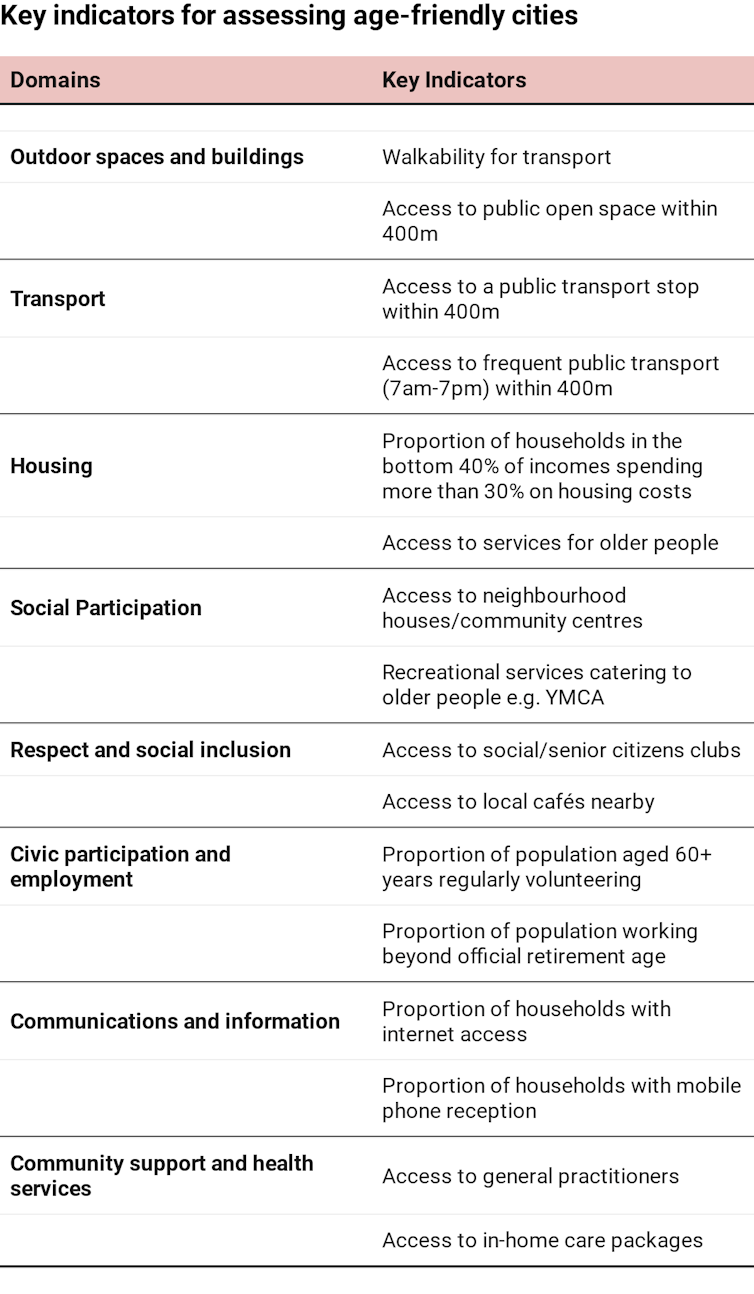Aged care isn’t working, but we can create neighbourhoods to support healthy ageing in place
In 2020, the coronavirus pandemic has exposed issues and inequities across bon ton. How we plan for ageing populations and older mass is one critical issue that has been unnoticed for decades. Fresher-faced spring chicken and families have become the sociology focus of increasingly short-term electoral cycles, reinforcing a ingrained prejudice against ageing and older people.
If Gandhi is right, and the apodictic measuring of a society can be recovered in how we regale the most indefensible, then Australia has a good deal to find out from the 683 deaths from COVID-19 in residential ripened care this year. Australia needs a radical shift to policies that better support ripening in topographic point — that is, in their own homes — rather than relying so heavily happening underfunded and poorly resourced residential aged worry.
Residential aged maintenance populations are growing, with 70% of facilities located in major cities and 30% in regional areas. These facilities and contemporary policies are unsatisfactory our older citizenry as known by the on-line Royal Commission into Aged Care. Regenerate is necessary now.
However, human activity aged care is only part of the problem of unsatisfactory to design adequately for ageing. Neoliberal policies have turned the ageing population into a growing consumer market while filial piety surgery family caring becomes rarer American Samoa economic and social pressures on working families (their fully grown children) become greater.
Older women are particularly vulnerable. In 2007, 75% of women aged over 70 had no superannuation (with superannuation beginning in the 1980s). Two-thirds of residents in aged care were women.
Existence age-friendly makes cities more liveable
We need to shift the conversation on ageing to healthy ageing and creating environments that better support ageing in place. Age-friendly places aren't just good for older people. They also support the needs of children, people with a disability and everyone other in a community.
In recent research we looked at how the World Health Organisation's Global Geezerhoo-Friendly Cities Guide can be practical in local planning. The take aim was to develop applicatory tools to aid policymakers and planners assess the eld-friendliness of local anaesthetic neighbourhoods. This included the use of spacial indicators to mensuration the eight domains of the Age-Informal Cities model.
Spatial indicators investigating the relationship 'tween wellness and place are created using geographic entropy systems (GIS) to map the presence of features within a local area. We have suggested winder indicators that can be created and mapped using desktop analysis to understand how age-friendly local spaces are.

One of the nearly striking features is that many of these advisable measures are important for everyone living topically and not just older multitude. Examples let in good walkability, public unresolved spaces, public send, affordable lodging, topical anaestheti services, cafes, doctors and cyberspace connectivity. Others are age-specific such as in-home aged care.
Most significantly, altogether of these factors are substantial ingredients of healthy and liveable communities. Together, they support better health and well-being outcomes for all. We have mapped umpteen of the suggested measures of age-friendly communities in the Australian Urban Observatory.
The use of additional engineering much every bit sensor and robot engineering science should also be considered in upcoming residential area and housing aim, but this depends on household net access. That can equal a problem, particularly in regional and remote areas where populations are ageing rapidly and fewer senior-care places are available.
Any of these indicators might not necessarily cost feasible for all regional and rural communities. Many regional communities have reduced access to services. However, these indicators still provide an important terminus a quo for discussions with diverse geographic region older people about what is important and what constitutes reasonable access within their community.
If we take in learnt anything from this difficult year, then post-COVID recuperation must include a broader approach to ageing that extends beyond human activity aged care to a focus connected healthy ageing. That means better plump for for citizenry to age in situ.
Senesce-friendly communities enable old mass to continue to make meaningful economic and social contributions to families and communities. However, this force out't occur unless localized places plan for all ages and abilities from the origin.
This story was originally published happening The Conversation by:
Elderly Research Fellow, Director Aboriginal Australian City-born Observation tower, Deputy Director (Acting) Centre for Urban Research, RMIT University
, Senior Research Fellow (Regional Community Development), Strategic Research Projects, University of Southern Queensland
, Assistant Lector, Charles Sturt University; and
Senior Inquiry Fellow, Saint John the Apostle Richards Centre for Rural Ageing Research, Lanthanum Trobe University
Source: https://hellocare.com.au/aged-care-isnt-working-can-create-neighbourhoods-support-healthy-ageing-place/
0 Response to "Aged care isn’t working, but we can create neighbourhoods to support healthy ageing in place"
Post a Comment